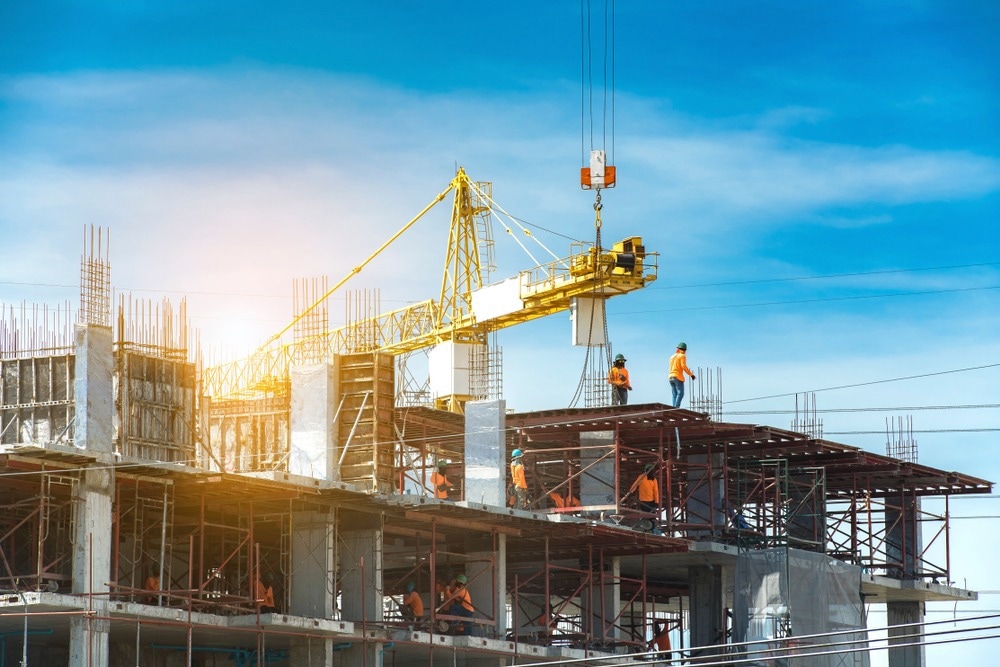Sustainability is key to the future of the construction industry. A main element of sustainability is improving time and cost savings, which requires an evolution in thinking within the sector in terms of processes and materials.

Image Credit: Red ivory/Shutterstock.com
In recent decades, the construction industry has focused on new and innovative materials to achieve net zero and provide comparable performance to conventional materials. This article will provide an overview of new and traditional materials and how their use can save time and money and promote sustainability in the sector.
Managing the Costs and Timelines of Construction Projects
Keeping construction projects on target and budget has always been a major consideration within the sector. Multivariate elements combine to govern multiple aspects of a project, such as labor, equipment, and building materials.
Finding the right balance can make the difference between a project that sticks to its budget and timeline and one that can become costly and time-consuming. Over the past century, this has become more pressing as the world rapidly industrializes and urbanizes and the construction sector’s environmental impact has become clearer.
Cost management impacts all areas of a project, from design to final build and beyond, affecting the useable lifetime of a new building. Ultimately, good cost management means that a project does not eat into a company’s bottom line whilst ensuring that the build is high-quality and satisfies the demands of a shifting construction ecosystem.
Reducing the Cost of Traditional Materials Such as Concrete
A significant proportion of the costs involved with new buildings and infrastructure is the materials involved. Traditional building materials include concrete, glass, and steel.
Depending on factors such as finish type, the amount of levelling necessary, and the size of the project, basic class concrete can cost anywhere between $60 and $85 per m2. This cost increases with the type of concrete used, with exposed aggregate finishes typically costing up to $150 per m2.
Approximately thirty billion tonnes of concrete are used globally per year. Per capita, this is three times as much as was used forty years ago and has grown more rapidly than steel or wood. Whilst relatively inexpensive, opportunities exist to reduce the cost of concrete use in new projects.
Whilst concrete is a strong and relatively cheap material, there are issues with long-term durability. Modern concrete buildings generally have a useable lifetime of around thirty to a hundred years before they have to be torn down and replaced, depending on construction style and installation manner.
Reducing the amount of concrete used is one main approach to saving the costs associated with concrete use. Additionally, the huge carbon footprint of concrete has focused attention on reducing its use. Several methods have been explored in recent decades such as using recycled concrete and replacing binders with sustainable green materials.
How 3D Printed Materials Can Save Time and Costs
Project time also governs cost and reducing this can save on critical factors such as labor and equipment. Innovative materials and construction techniques can help save time and cost for new projects.
One of the most discussed technologies in the construction industry is additive manufacturing, more commonly termed 3D printing. This manufacturing method can produce high-quality, durable structures with immense design freedom in a fraction of the time that traditional construction takes, a few days rather than months.
3D printing saves on labor, materials, and tools and has virtually no waste, with higher proportions of materials going into the building itself rather than having to be disposed of, adding extra costs to a project. 3D printing also allows for multi-material construction, further reducing costs and environmental impacts.
New Materials
Several innovative materials have been developed in recent years that possess core benefits of sustainability and cost-effectiveness.
Bamboo is a fast-growing plant that can be used in construction. Eminently renewable, it can be employed as a structural material in columns, beams, and floors. Cheap to produce, bamboo possesses high tensile strength and has a low carbon footprint, making it an ideal alternative green construction material.
Plastic has long been used as a cheap packaging material, but in the construction industry, it has largely been ignored as it has limited performance. However, high-performance plastics have been developed in recent years, which can replace glass and metal components at a much lower cost than these traditional materials.
Self-healing concrete is another innovative sustainable material that can extend the lifetime of buildings and infrastructure due to the inclusion of bacteria or microcapsules that help heal damage to the structure. This significantly reduces maintenance costs for new buildings.
Carbon fiber can be used as a cheap and sustainable reinforcement material for traditional concrete or newer sustainable concretes, replacing expensive and carbon-intensive steel rebar. Additionally, carbon fiber can be used to construct flexible, resilient structures such as bridges, reducing maintenance costs.
In Summary
Improving the sustainability and financial performance of new building projects is a key concern within the construction industry currently. New building materials, sustainable practices, and technological advances such as 3D printing are helping to reduce both costs and time, ensuring that the construction industry of the 21st century is fit for purpose.
More from AZoBuild: Types of Natural Stone Commonly Used In Construction
References and Further Reading
Specopstools (2020) The Impact of 3D Printing on the Construction Industry
https://specopstools.com/blog/the-impact-of-3d-printing-on-the-construction-industry
Aouf, R.S (2022) Ten future materials that could change the way we build [online] dezeen.com. Available at:
https://www.dezeen.com/2022/03/17/future-building-materials-construction-architecture/
RICS (2021) Construction materials cost increases reach 40-year high [online] rics.org. Available at:
https://www.rics.org/news-insights/construction-materials-cost-increases-reach-40-year-hig
Disclaimer: The views expressed here are those of the author expressed in their private capacity and do not necessarily represent the views of AZoM.com Limited T/A AZoNetwork the owner and operator of this website. This disclaimer forms part of the Terms and conditions of use of this website.